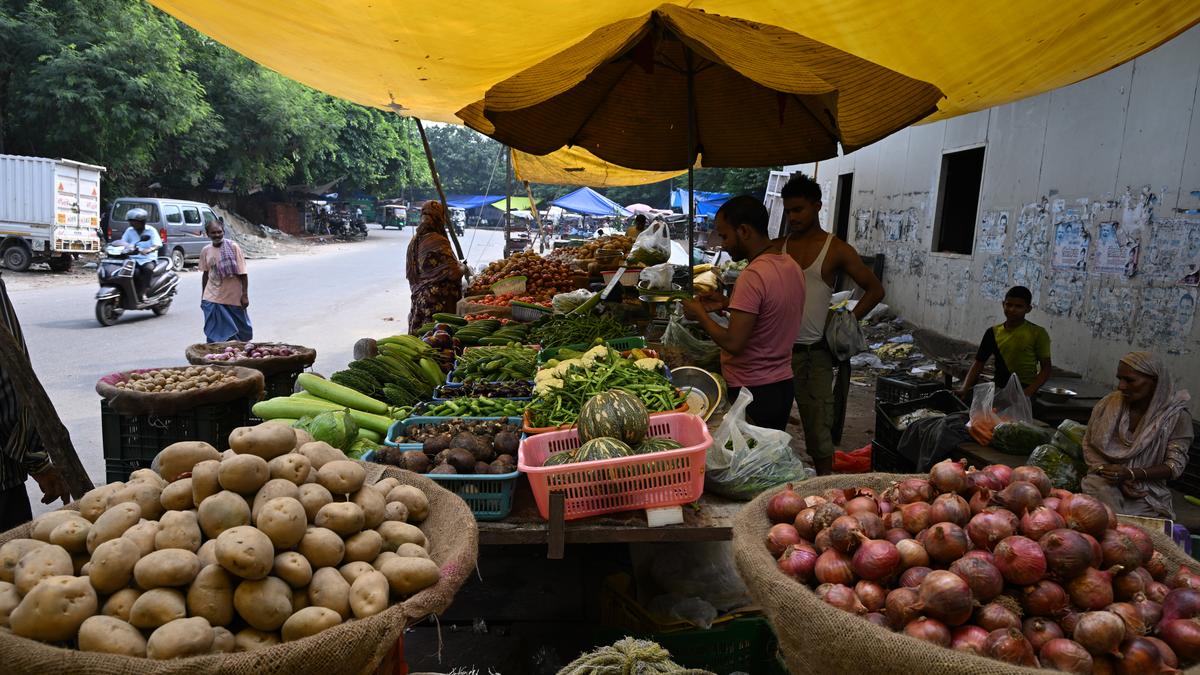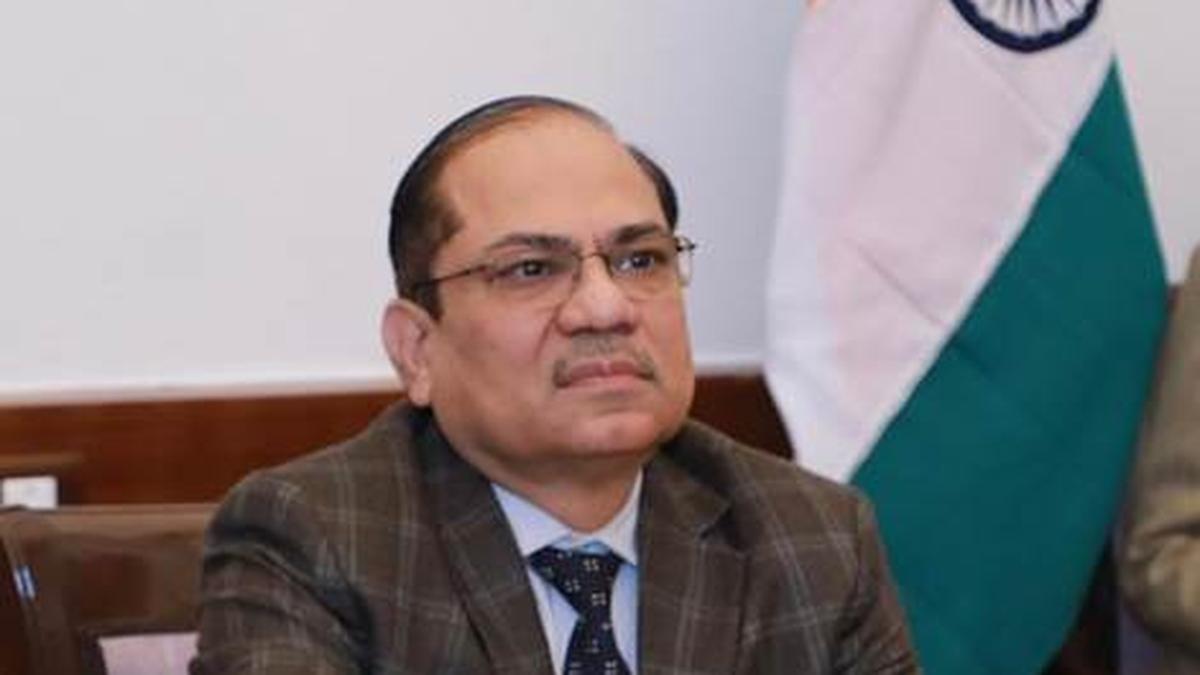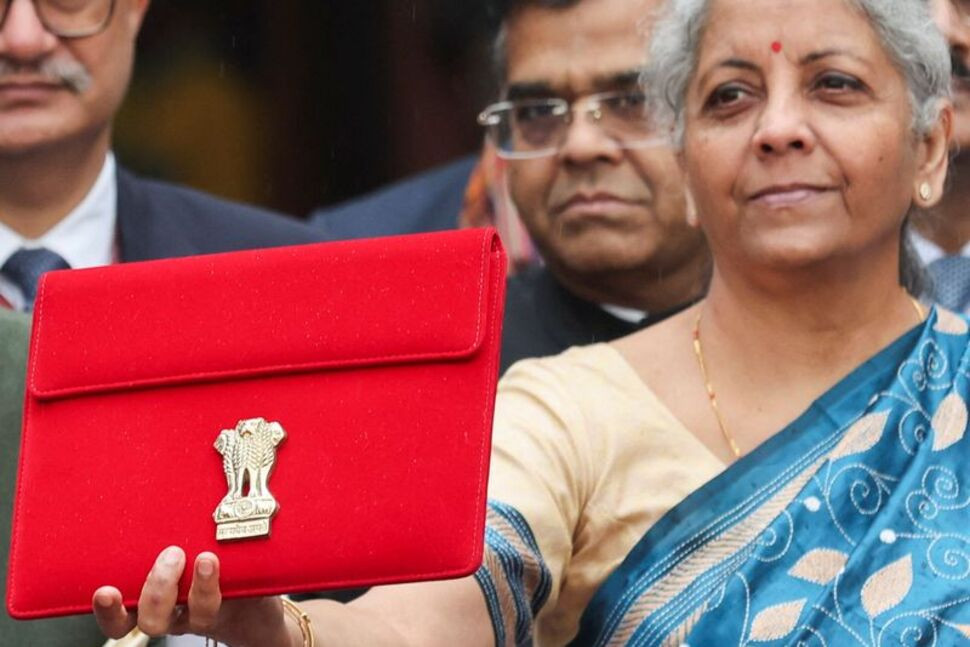A 10.9% spike in food prices lifted India’s retail inflation to a 14-month high of 6.2% in October, from 5.5% in September, with prices of vegetables and edible oils escalating at a sharp pace not seen in recent years.
| Photo Credit: Sushil Kumar Verma
A 10.9% spike in food prices lifted India’s retail inflation to a 14-month high of 6.2% in October, from 5.5% in September, with prices of vegetables and edible oils escalating at a sharp pace not seen in recent years.
October’s price rise pace marked a breach of the Reserve Bank of India’s (RBI’s) upper tolerance limit for inflation, with rural India facing a sharper uptick of 6.7%, while urban consumers encountered an inflation of 5.6%, scotching any hopes of an interest rate cut from the RBI in its December monetary policy review.
Rural food prices were 10.7% higher, while food inflation in urban India was even higher at 11.1% this October, with prices rising nationally at the fastest clip since July 2023. Vegetables Inflation bounced up from 36% in September to a 57-month peak of 42.2% in October, while edible oil prices shot up 9.5%, the highest spike in nearly two years, from about 2.5% in the previous month.
Fruit prices also hardened by 8.4%, although pulses inflation eased to 7.4%, after 17 months of double-digit rise in prices. Spices prices dropped 7%. In October, households also faced a sharp 11% rise in costs of personal care and effects, up from 9% in September.
Terming the consumer price inflation pace shocking, Bank of Baroda chief economist said food inflation has spread to oils, and the basket of cereals, pulses, fruits, vegetables and oils are the problem areas.
“Inflation may recede albeit gradually for cereals and pulses but will take longer for vegetables. Core inflation also has upward bias with personal care products showing higher inflation as input costs are transmitted,” he pointed out, stressing that this will ensure that a December rate cut is out of consideration.
The RBI had projected an average inflation of 4.8% for the October to December quarter or the third quarter (Q3) of 2024-25, before declining to 4.2% in the final quarter. However, for that arithmetic to hold after October’s CPI spike, price rise would have to soften to about 4.1% through this month and December.
Core inflation that excludes food and energy prices, also saw a mild rise from September’s estimated nine-month high of 3.8%, but remained under 4% for the 11th successive month, economists reckoned.
“The surge in edible oil inflation in October was driven by a steep 27% rise in global prices due to supply disruptions in Southeast Asia. Though non-food inflation remains benign around 3%, the recurring flare-up in food inflation has kept headline inflation elevated and creates an upside risk to the inflation trajectory – restricting the easing in monetary policy,” said Crisil chief economist Dharmakirti Joshi.
Mr. Joshi expects the RBI’s Monetary Policy Committee to cut rates towards the end of 2024-25, with food inflation likely to recede due to the healthy kharif sowing and fresh stocks of vegetable prices entering the market.
“High food inflation in October, 2024 is mainly due to increase in inflation of vegetables, fruits and oils and fats,” the National Statistical Office said, while noting a “significant decline in inflation” in Pulses, Eggs, Sugar, and Spices.
Compared to September, the CPI rose 1.3%, with a slightly higher uptick of 1.42% in rural India. However, the Consumer Food Price Index (CFPI) was up 2.6%, with rural and urban areas facing the same spike in costs.
Published – November 12, 2024 04:30 pm IST






